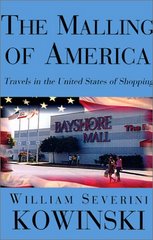Before even starting to explore the notion of becoming native to this North Coast place, we must begin with the people who are Native to this place.
The notion of becoming native is one of those fruitful and perhaps necessary paradoxes, especially in a nation of immigrants, at a time when people move around so much. The idea of becoming native is to feel the same deep identification, and to have the same stake in a place as someone born here, with generations of ancestors buried in its ground.
It's a notion pretty much in direct opposition to what would seem to have been the approach of the first non-Native influx into this part of the country, during the 1849 Gold Rush. Then it was to use what this place offered as raw material, while that which wasn't useful to the invaders was destroyed or ignored.
This is one of the rare regions in America where indigenous peoples still live more or less where they have for many centuries before Europeans arrived. It is probably rarer still in the amount and frequency of regular contact indigenous Natives and resident non-Natives maintain in daily life.
I wonder how many non-Native people here on the North Coast appreciate how unusual is this daily opportunity for contact with Native cultures. It's certainly not everywhere in America that a local government meeting begins with a welcome by the tribal leader of the indigenous people who lived on the land where they are meeting. But here it's perfectly natural for a peace march to begin with a Native prayer, not conducted by some Sioux medicine man from far away (or someone claiming to be one) but by a local resident.
Newcomers probably notice this, at least at first. The North Coast is predominantly white, more so than most areas of California, and most urban areas throughout North America. But it is probably even more rare for the most numerous and culturally influential "minority group" to be Native peoples. It was that way for a long time here, and although indigenous peoples are no longer the largest population after whites throughout Humboldt County, they remain numerically significant and culturally very influential.
When moving here from western Pennsylvania first became a possibility, and I looked over this territory on a map, two things struck me immediately. First, the surroundings of state and national forest, and then of wilderness. Second, the Yurok reservation, Hoopa Valley and other Indian lands nearby. Both of these were powerful attractions.
The second writing job I did here---and the first one I actually got paid for---was for the Seventh Generation Fund, the only foundation aiding grassroots and traditional Native American cultures that is run by Native peoples. International in scope, it is headquartered in Arcata.
I'm still not sure why Executive Director Chris Peters hired me. Maybe he isn't either. (I worked on several projects there for about a year.) I'd sent him a letter out of the blue, after hearing him speak at a Green Party convention. But thanks to him, I met Natives of many cultures and places throughout the West, and I finally was getting to witness something of the relationship of people from an indigenous culture to their home place.
It was an opportunity to learn about cultures that were unfamiliar, yet were far from foreign: they were cultures that grew directly from where we live. At the same time, it was a chance to correct the imagery we often have as non-Natives. Here it is especially possible to understand that Native cultures and Native peoples are of the present, as well as being deeply rooted in traditional knowledge.
That was the beginning of a continuing journey. By working on various projects as well as through just living here, I've met and come to admire a number of North Coast Native people, young and old, women and men, as well as other Natives who bring their own traditions and backgrounds from elsewhere to their lives here. However else I feel about my time here, I'll always be grateful I came into contact with Cheryl Seidner, Chris Peters and Julian Lang, in particular. I've learned a lot, and I still know little. But I know a little of who they are, and a little more of who I am. And through them as well as my own sporadic experience, I know something about this place.
And now that I think about it, there is something specific to this venture that I learned from that first talk I heard Chris Peters give. He suggested that Native populations and cultures might not survive many years into the future. It might well be up to non-Natives to finally learn the same responsibility for the earth that is at the core of Native cultures, because this is the ground that supports us as well, in every sense.
I hoped then and hope now that he was wrong about a dwindling away of Native populations. But I realize at this moment that he was saying essentially what this project is trying to say: that we must all become native to this place. And the place to begin is with the peoples and cultures that began here, and remain here.
Christmas Messages
-
Regardless of religious beliefs, the story of Jesus is a crucial
contribution to the cultural mythos. Partly this is because it is so
different. Accor...
22 hours ago








No comments:
Post a Comment